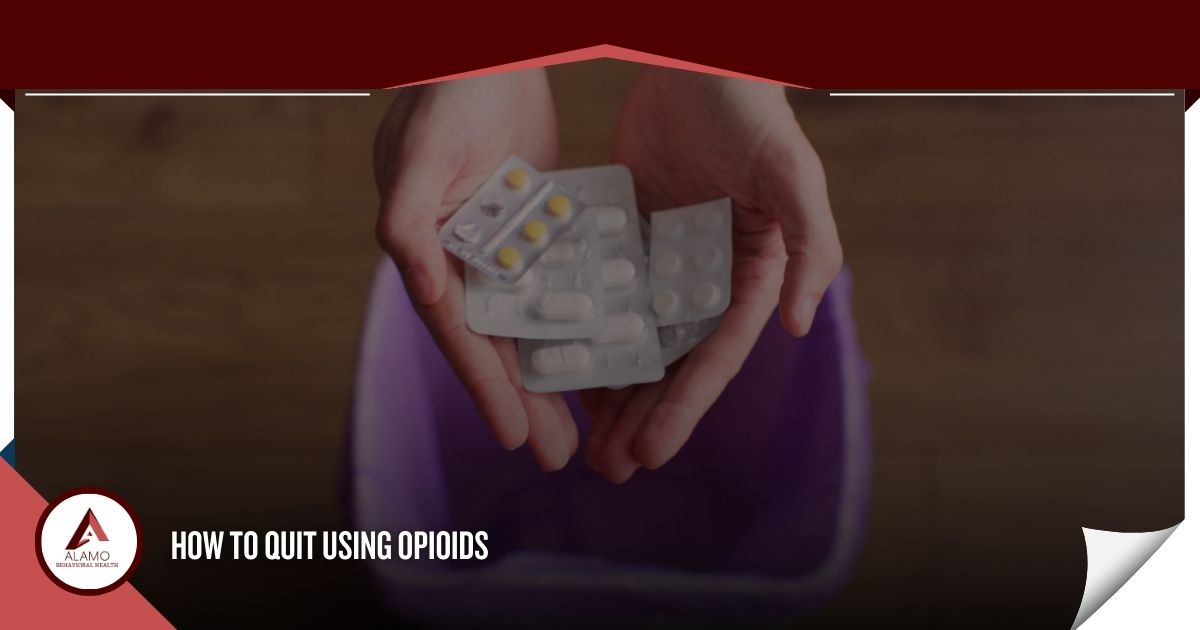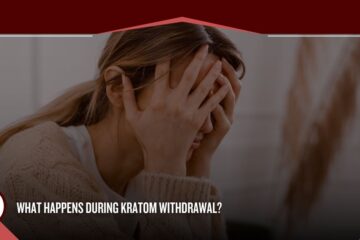Opioid abuse and addiction affect millions of people in the United States. People may begin taking opioid pain relievers and then quickly develop a life-threatening addiction to these potent drugs.
According to the National Center for Drug Abuse Statistics, nearly 4% of adults in the United States abuse opioids.[1] Opioid addiction is a destructive and complex condition that requires comprehensive treatment and continuing support.
Understanding opioid abuse and addiction can help people get the treatment they need to overcome it. This article will explore opioid addiction and how to put it in the past.
What you will learn:
- How opioid addiction occurs
- How to recognize opioid abuse or addiction
- What to expect during opioid addiction treatment
If you need help to stop using opioids, you are not alone. Contact the Alamo Behavioral Health specialists now to explore our comprehensive opioid addiction rehab programs.
Opioid Addiction: An Overview
Opioids are drugs that bind to specific receptors in the brain. These potent drugs affect parts of the brain associated with pleasure, pain management, and emotional regulation.[2] Doctors may prescribe opioids to help patients manage pain after surgery or during treatment of other conditions.
People who begin taking prescription opioids may experience pleasurable side effects, such as relaxation and euphoria. Some may like the way they feel while taking opioids. This can lead people to misuse these drugs.
Opioid misuse includes:
- Taking a larger dose of an opioid drug than prescribed
- Taking opioids more often than prescribed
- Using opioid drugs for a longer period than prescribed
- Ingesting the drugs differently than prescribed, such as crushing and snorting pills
- Taking opioids recreationally (without a prescription)
After misusing opioids for some time, people may develop tolerance. This means that they will need to take higher doses of the drugs to get the desired effects of opioids. Over time, people may develop a physical dependence on opioids.
Once people develop a physical dependence on opioids, it can be nearly impossible for them to stop using these drugs. Those who cannot get prescription opioids may turn to illicit opioid drugs like heroin.
Opioid addiction can occur quickly. People who abuse opioids are at increased risk of opioid overdose and other long-term complications. It is important to watch for signs of opioid misuse and seek opioid addiction help if you recognize a problem.
Recognizing Opioid Addiction
Anyone who takes opioids can develop opioid dependence. People may become addicted to these potent drugs, even when taking them exactly as prescribed.
If you are concerned that you or someone you love is abusing opioids, you must watch for signs and take action immediately. Signs of opioid addiction include:[2,3]
- Finishing their prescription pain medicine early
- Drastic mood swings or erratic behaviors
- Noticeable changes in appetite, sleep, or appearance
- Neglecting responsibilities at work, school, or home
- Giving up hobbies or interests
- Stealing valuables or money
- Isolating or only spending time with a new group of people
- Having more than one prescription for an opioid drug from multiple doctors (“doctor shopping”)
Opioid abuse can significantly change a person’s behaviors. Recognizing the signs of opioid addiction and taking action is critical to getting help and treatment.
What to Expect in Opioid Addiction Treatment
People with opioid dependence must receive comprehensive treatment. Holistic treatment programs address the physical, behavioral, and psychological aspects of addiction. People receive treatment to help them safely stop using opioids. Then, they learn effective coping skills to reduce the risk of relapse.
Here is an overview of what to expect during each stage of opioid addiction treatment.
Assessment
Before starting treatment, a medical or addiction specialist will assess your treatment needs. The assessment may consist of:
- Lab testing
- Physical examination
- Questions about your current and past opioid use
- Mental health and medical history
This information will help your team create the most effective rehab plan to help you reach your recovery goals.
Detox
Many people begin opioid rehab in a medically-supported detox program. In detox, you will receive medications and support to help you safely stop using opioids. You may take medications for opioid withdrawal symptoms and cravings.
Methadone or buprenorphine are commonly used during detox. These medications can help reduce cravings and other symptoms of opioid withdrawal, including:[4]
- Stomach cramping
- Anxiety
- Cravings
- Runny nose
- Watery eyes
- Depression
- Excessive yawning
- Chills or goosebumps
- Nausea
- Muscle aches
- Bone pain
- Insomnia
- Heightened sensitivity to pain
- Fever
- Diarrhea
Medical and mental health care professionals will assess your symptoms and provide treatment to help you have a safe, complete detox.
Treatment
After completing detox, you will begin to follow a personalized treatment plan that includes therapies to address the complex roots of your addiction. Your plan may include:
- Behavioral therapies
- Mental health treatment
- Medications to reduce lingering withdrawal symptoms
- Relapse prevention education
- Support groups
- Therapy for family members
- Individual counseling
- Holistic therapies like exercise, yoga, mindfulness, and nutrition support
- Aftercare planning
You may begin the recovery process in an inpatient program before transitioning into outpatient treatment options.
Find Opioid Addiction Treatment Now
If you or someone you love needs help to stop using opioids, reach out to the Alamo Behavioral Health specialists. Our intake team can answer questions, verify insurance details, and help you schedule an intake assessment as soon as possible.
Take the first step of your recovery journey today. Contact the Alamo Behavioral Health team now to get started.
References:
- National Center for Drug Abuse Statistics (NCDAS): Opioid Epidemic: Addiction Statistics
- American Psychiatric Association: Opioid Use Disorder
- Johns Hopkins University: Opioid Use Disorder
- Wiley Online Library: Opioid withdrawal symptoms, a consequence of chronic opioid use and opioid use disorder: Current understanding and approaches to management







